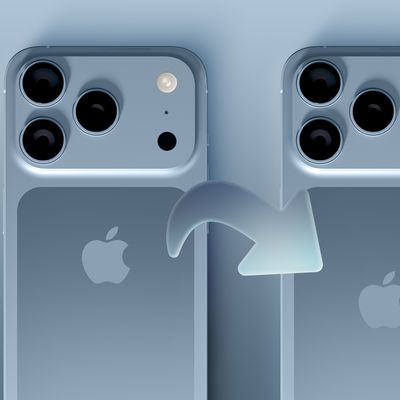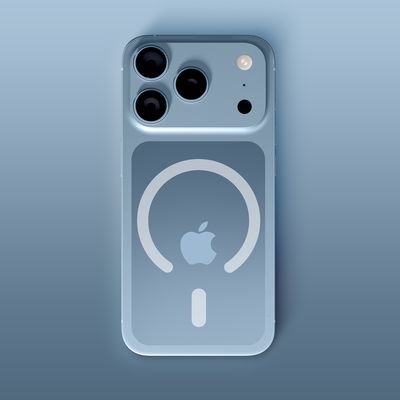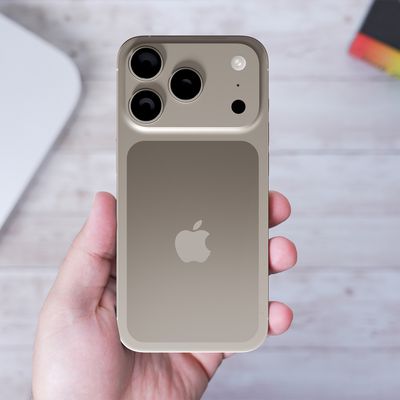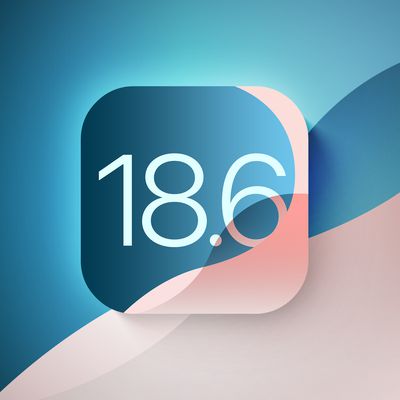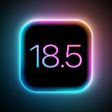Apple recently updated the MacBook Pro with the M4 series of chips and a series of other upgrades including a 12MP camera, a nano-texture display option, and Thunderbolt 5 connectivity. The new machines follow updated MacBook Air models with the M3 chip that were released earlier in 2024, so how do the latest models compare?
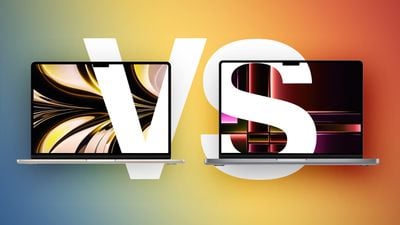
Despite now being similar in appearance, the MacBook Air and the MacBook Pro are very different devices, so should you consider purchasing the 13- or 15-inch MacBook Air, which start at $999, to save money, or do you need one of the higher-end 14- or 16-inch MacBook Pro models, which cost at least $600 more? Our guide helps to answer the question of how to decide which of these two popular laptops is best for you.
| MacBook Air | MacBook Pro |
|---|---|
| M2: 13.6-inch display M3: 13.6- or 15.3-inch display |
14.2- or 16.2-inch display |
| LCD Liquid Retina display | Mini-LED Liquid Retina XDR display |
| 60hz refresh rate | ProMotion for refresh rates up to 120Hz |
| Up to 500 nits brightness | Up to 1,000 nits brightness and 1,600 nits peak HDR brightness |
| Nano-texture display option | |
| 1080p FaceTime HD camera | 12MP Center Stage camera with support for Desk View |
| Apple M2 or M3 chip | Apple M4, M4 Pro, or M4 Max chip |
| M2: Enhanced 5nm node (N5P) based on A15 Bionic chip from iPhone 13 (2021) M3: 3nm node (N3B) based on A17 Pro chip from iPhone 15 Pro (2023) |
3nm node (N3E) based on A18 chip from iPhone 16 (2024) |
| M2: 3.49 GHz CPU clock speed M3: 4.05 GHz CPU clock speed |
M4: 4.4 GHz CPU clock speed M4 Pro and M4 Max: 4.5 GHz CPU clock speed |
| 8-core CPU with 4 performance cores and 4 efficiency cores | M4: 10 CPU cores with 4 performance and 6 efficiency cores M4 Pro: Up to 14 CPU cores with 10 performance and 4 efficiency cores M4 Max: Up to 16 CPU cores with 12 performance and 4 efficiency cores |
| Up to 10-core GPU | M4: 10-core GPU M4 Pro: Up to 20-core GPU M4 Max: Up to 40-core GPU |
| Updated GPU architecture | Updated GPU architecture with improved efficiency |
| M2: 16-core Neural Engine, 15.8 trillion operations per second M3: 16-core Neural Engine, 18 trillion operations per second |
16-core Neural Engine, 38 trillion operations per second |
| 16GB or 24GB unified memory | M4: 16GB, 24GB, or 32GB unified memory M4 Pro: 24GB or 48GB unified memory M4 Max: 36GB, 48GB, 64GB, or 128GB unified memory |
| LPDDR5 memory | LPDDR5X memory |
| 100GB/s memory bandwidth | M4: 120GB/s memory bandwidth M4 Pro: 273GB/s memory bandwidth M4 Max: 546GB/s memory bandwidth |
| Passive cooling | Active cooling |
| High Power Mode on all M4 Pro and M4 Max models | |
| M3 models only: Dynamic Caching Hardware-accelerated ray tracing Hardware-accelerated mesh shading Support for AV1 decode |
Dynamic Caching Hardware-accelerated ray tracing Hardware-accelerated mesh shading Support for AV1 decode |
| M2: Wi-Fi 6 M3: Wi-Fi 6E |
Wi-Fi 6E |
| Two Thunderbolt 3 (USB-C) ports | M4: Three Thunderbolt 4 (USB-C) ports M4 Pro or M4 Max: Three Thunderbolt 5 (USB-C) ports |
| HDMI 2.1 port with support for multichannel audio output | |
| SDXC card slot | |
| 13-Inch: Four-speaker sound system 15-Inch: Six-speaker sound system with force-canceling woofers |
High-fidelity six-speaker sound system with force-cancelling woofers |
| Three-mic array with directional beamforming | Studio-quality three-mic array with high signal-to-noise ratio and directional beamforming |
| M2: Support for one external display M3: Support for up to two external displays when the lid is closed |
M4 or M4 Pro: Support for two external displays M4 Max: Support for up to four external displays |
| Dedicated display engine | |
| 256GB, 512GB, 1TB, or 2TB of storage | M4: 512GB, 1TB, or 2TB storage M4 Pro or M4 Max: 512GB, 1TB, 2TB, 4TB, or 8TB storage |
| 13-Inch: 52.6-watt-hour lithium-polymer battery 15-Inch: 66.5-watt-hour lithium-polymer battery |
14-Inch: 72.4-watt-hour lithium-polymer battery 16-Inch: 100-watt-hour lithium-polymer battery |
| 18-hour battery life | M4 14-Inch or M3 Pro 16-Inch: 24-hour battery life M4 Pro 14-Inch: 22-hour battery life M4 Max 14-Inch: 18-hour battery life M4 Max 16-Inch: 21-hour battery life |
| 30W, 35W, or 67W USB-C Power Adapter | 67W, 96W, or 140W USB-C Power Adapter |
| Silver, Space Gray, Starlight, or Midnight color options | Silver or Space Black color options |
| M2 13-Inch: Starts at $999 M3 13-Inch: Starts at $1,099 M3 15-Inch: Starts at $1,299 |
M4 14-Inch: Starts at $1,599 M4 Pro 14-Inch: Starts at $1,999 M4 Pro 16-Inch: Starts at $2,499 |
Design
Both the MacBook Air and MacBook Pro share the same basic design with a flat top and rounded edges on the bottom, but they do have several minor details that differ. For example, while both MacBooks have displays with a "notch" at the top to facilitate the built-in webcam, the MacBook Pro's bezels are noticeably slimmer. The keyboard well of the high-end MacBook Pro is also all-black.
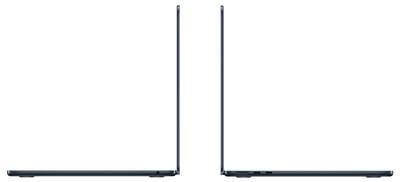
The MacBook Air is available in Silver and Space Gray, but the MacBook Air is also offered in Starlight and Midnight color options, so if you are looking for a particular aesthetic with one of these finishes, you will need to get the MacBook Air. Space Black is exclusive to the MacBook Pro.
| MacBook Air (13-Inch) | MacBook Air (15-Inch) | MacBook Pro (14-Inch) | MacBook Pro (16-Inch) | |
|---|---|---|---|---|
| Height | 0.44 inches (1.13 cm) | 0.45 inch (1.15 cm) | 0.61 inches (1.55 cm) | 0.66 inch (1.68 cm) |
| Width | 11.97 inches (30.41 cm) | 13.40 inches (34.04 cm) | 12.31 inches (31.26 cm) | 14.01 inches (35.57 cm) |
| Depth | 8.46 inches (21.5 cm) | 9.35 inches (23.76 cm) | 8.71 inches (22.12 cm) | 9.77 inches (24.81 cm) |
| Weight | 2.7 pounds (1.24 kg) | 3.3 pounds (1.51 kg) | 3.5 pounds (1.61 kg) | 4.8 pounds (2.15 kg) |
Dimensions are also a key area of difference between the MacBook Air and MacBook Pro. The 16-inch MacBook Pro is considerably larger and heavier than the 15-inch MacBook Air, but it is important to not understate the difference between the 14-inch MacBook Pro and the 13-inch MacBook Air. While the 14-inch MacBook Pro offers a larger display than the MacBook Air, its marginally larger footprint, added thickness, and an additional 0.8 pounds of weight do make for a noticeably less portable machine if you prefer to travel light.
Even so, the 14-inch MacBook Pro offers a very good balance of portability and performance, so if you need its added capabilities, its size and weight should not hold you back. The 15-inch MacBook Air also provides a good balance of portability and display area, but users wary of its size should opt for the 13-inch model.
Ports and Connectivity
The selection of ports is an area of major difference between the two machines. The MacBook Air features just two Thunderbolt ports, while the M4 version of the MacBook Pro adds a third Thunderbolt 4 port plus an HDMI 2.1 port and SDXC card slot. When configured with the M4 Pro or M4 Max, the MacBook Pro upgrades those Thunderbolt ports to Thunderbolt 5, in addition to its HDMI 2.1 port and SDXC card slot. Both machines feature a 3.5mm headphone jack with support for high-impedance headphones.
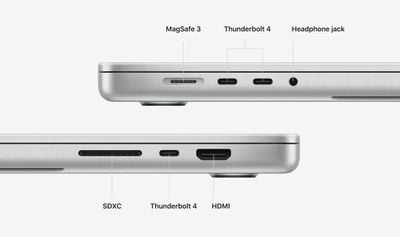
All in all, the MacBook Pro is much more versatile in terms of physical connectivity, offering useful features for professionals who use SDXC cards from digital cameras, Thunderbolt 5 accessories, or even simply more USB peripherals.
Display Size
The smaller MacBook Air's display is 13.6 inches in size, which is a little smaller than the 14.2-inch MacBook Pro, and markedly smaller than the 16.2-inch MacBook Pro. 13.6 inches is still bigger than the largest iPad Pro model, which comes in at 13 inches, and even all of the previous Intel-based MacBook Air and smaller MacBook Pro models, meaning that it should be adequate for most users. The 14.2-inch MacBook Pro simply offers a little bit more screen real estate to those who need high-end capabilities.
The 15.3-inch MacBook Air and 16.2-inch MacBook Pro's displays will be better replacements for a desktop machine and provide much more screen space to arrange multiple windows and use professional applications that benefit from additional display area.
Display Technology
The display technologies of both machines are significantly different. Like most MacBooks in recent years, the MacBook Air has an LCD panel, but owing to its slim bezels and rounded corners, Apple calls it a Liquid Retina display. The 14- and 16-inch MacBook Pro models feature Apple's more advanced mini-LED Liquid Retina XDR technology for deeper blacks, better dynamic range, and improved color accuracy.
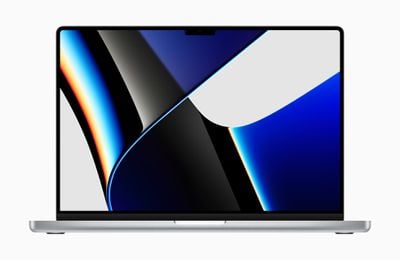
The XDR display can get much brighter, reaching as high as 1,600 nits of brightness at its peak when showing HDR content. The 14- and 16-inch MacBook Pro models also have ProMotion displays, allowing them to vary their refresh rate up to 120Hz. The MacBook Air does not have a display with a variable refresh rate.
It will be worth getting the high-end MacBook Pro models for viewing and editing HDR content, as well as watching high-framerate video such as sports. The display of the MacBook Air is sufficient for most users and some may not even notice a drastic difference. The MacBook Pro's deeper blacks and smoother on-screen motion simply offer a slightly better experience.
The MacBook Pro is also available with a nano-texture display for an additional $150, which significantly cuts down on glare in bright environments. No such option is offered with the MacBook Air.
Chips
The MacBook Air contains the M2 or M3 chip, while MacBook Pro customers can choose between the M4, M4 Pro, and M4 Max chips. The M4 Pro and M4 Max are scaled-up versions of the M4 chip that offer additional CPU and GPU cores.
For example, the M4 Max provides a CPU with up to eight additional cores and a GPU with up to 30 additional cores. The entry-level MacBook Air's M2 chip is only a little less powerful than the M4, M4 Pro, and M4 Max in single-core tasks, but the M4 chips, and particularly the Pro and Max versions, are considerably better in multi-core and graphics tasks.
With significantly more transistors, performance CPU cores, and GPU cores, the M4 Pro and M4 Max are powerful chips designed for professionals with demanding workflows. The M2 and M3, on the other hand, are more consumer-oriented chips focused on delivering surprisingly impressive performance and excellent efficiency to keep temperatures down and prolong battery life. The M4 series of chips also brought a dramatic improvement to Neural Engine performance for machine learning and artificial intelligence tasks.
It is also worth noting that the MacBook Air is passively cooled and contains no fan, which can slightly constrain peak performance compared to the MacBook Pro, since the high-end machines have large fans to actively cool the system and push the chips harder.
The M2 MacBook Air only supports a single external display. The limitations of the M3, M4, and M4 Pro chips also mean that MacBook Air and MacBook Pro devices configured with these chip support up to two external displays, whereas M4 Max machines support up to four external displays.
Memory and Storage
The MacBook Air can be configured with up to 24GB of unified memory and up to 2TB of storage, which should be more than enough for the vast majority of users. For those who need even more memory and storage, the MacBook Pro can be configured with significantly more memory and storage than the top-spec MacBook Air.
The M4 Pro and M4 Max chips in the MacBook Pro also provide up to 273GB/s and 546GB/s memory bandwidth respectively – an enormous increase over the 100GB/s memory bandwidth with the M2 and M3 models. All models now start with 16GB of memory as standard.
Speakers and Microphones
The 13-inch MacBook Air has a four-speaker sound system that is surprisingly full and balanced for such a small, slim device. The 15-inch MacBook Air and all of the MacBook Pro models take things to the next level with a six-speaker sound system with force-cancelling woofers for dramatically bigger and deeper audio. Apple also describes the MacBook Pro's speaker system as "high-fidelity," which may be invaluable to users who work in professional audio production or simply listen to a lot of music out-loud.
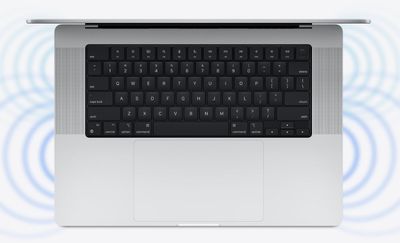
The MacBook Air has a three-mic array with directional beamforming that is perfect for activities like video calls and voice notes. The MacBook Pro has what Apple calls a "studio-quality" three-mic array with high signal-to-noise ratio and directional beamforming. While they are not as good as a dedicated microphone, the MacBook Pro's microphones are impressive and, at a push, are suitable for production purposes like podcasting.
Battery Life
The 14-inch MacBook Pro with the M4 Max chip has the same 18-hour battery life as the MacBook Air, but all other MacBook Pro models offer better battery life. The M4 14-inch and M4 Pro 16-inch models offer up to 24-hour battery life – a significant increase over the MacBook Air.
Final Thoughts
Overall, the MacBook Air is the best option for casual users, offering an excellent balance of features and performance in a highly portable design. The MacBook Air's $999 starting price is much more affordable compared to the MacBook Pro, and with an education discount or an offer from our Apple Deals Roundup, it is possible to get that price down by at least $100. The additional $600 to get the MacBook Pro likely is not worth it for most ordinary users, and on the contrary, many will prefer the slimmer, lighter design of the MacBook Air and perhaps even its additional color options.

Professionals who require larger and more accurate displays, additional ports, more memory and storage, and a very high level of performance should look to the 14- and 16-inch MacBook Pro with the M4 Pro and M4 Max chips, and the higher price points of these machines reflects this. The high-end MacBook Pro models are not targeted at everyday consumers, being clearly tailored to creatives and professionals who rely heavily on the capabilities of their machines. As such, these high-end models should only be a go-to option if you are a power-user or professional who can make use of its advanced features. The 16-inch MacBook Pro, in particular, is also potentially a good desktop replacement machine due to its large display.
- M2 vs. M3 MacBook Air Buyer's Guide: All Differences Compared
- 13-Inch vs. 15-Inch MacBook Air Buyer's Guide
- 14-Inch vs. 16-Inch MacBook Pro Buyer's Guide 2024
Alternatively, if you are considering the $1,299 15-inch MacBook Air, it may be worth paying more to get the M4 MacBook Pro. For just $300 more, the M4 MacBook Pro offers a considerably better Liquid Retina XDR display with ProMotion, a more powerful chip with active cooling, an extra Thunderbolt port, four extra hours of battery life, better speakers and microphones, an HDMI port and SDXC card slot, and more. In fact, if you configure the 15-inch MacBook Air with 512GB of storage to match the M4 MacBook Pro, there is only a $100 between the two machines, so in this instance it is almost always worth getting the more powerful machine, unless maximizing screen size is your only priority.


